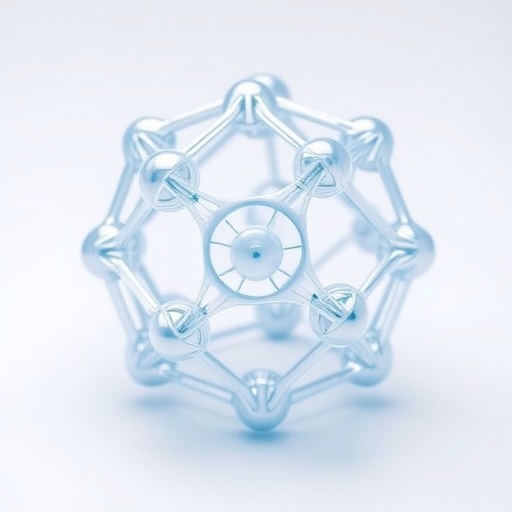A groundbreaking strategy for enhancing the durability of polymer materials promises to revolutionize the production of plastics, potentially extending their lifespan and significantly reducing environmental waste. Researchers at the Massachusetts Institute of Technology (MIT) and Duke University have pioneered an approach that leverages the power of machine learning to discover novel molecular crosslinkers capable of dramatically improving the tear resistance of polymers. This interdisciplinary research bridges chemical engineering, computational chemistry, and advanced data science, offering new avenues for creating tougher, longer-lasting plastic materials.
At the heart of this innovation lie special molecules called mechanophores—structures that alter their physical or chemical properties when subjected to mechanical force. By integrating mechanophores as crosslinkers within polymer networks, materials can become more resilient, responding dynamically under stress rather than succumbing to cracks or breaks. The study harnessed machine learning techniques to sift through thousands of potential mechanophores, identifying those most likely to enhance polymer toughness before costly and time-intensive experimental validation.
Heather Kulik, the Lammot du Pont Professor of Chemical Engineering at MIT and a senior author of the study, emphasizes the transformative potential of these findings. She explains that these mechanophores “can be useful for making polymers stronger in response to force,” meaning that the materials not only endure strain but actively exhibit enhanced resilience rather than failure. This shift from passive to responsive polymer performance could dramatically reframe the way durable plastics are designed and utilized.
.adsslot_pSKfmn0D9h{width:728px !important;height:90px !important;}
@media(max-width:1199px){ .adsslot_pSKfmn0D9h{width:468px !important;height:60px !important;}
}
@media(max-width:767px){ .adsslot_pSKfmn0D9h{width:320px !important;height:50px !important;}
}
ADVERTISEMENT
Focusing specifically on a subset of organometallic compounds known as ferrocenes, the research team explored their underexamined potential as mechanophore crosslinkers. Ferrocenes are characterized by an iron atom “sandwiched” between two cyclopentadienyl rings, which can bear various chemical modifications. Historically employed in pharmaceuticals and catalysis, these molecules exhibited promise due to their unique electronic and mechanical properties, but their mechanochemical potential remained largely untapped.
Traditional experimental study of such mechanophores is notoriously slow and resource-intensive, often requiring weeks to fully evaluate the mechanochemical behavior of a single molecule. Computational simulations, while faster, still consume considerable time when applied to large chemical libraries. To overcome these barriers, the researchers employed a neural network-based machine learning model trained on an initial dataset derived from both computational simulations and structural databases, enabling rapid prediction of mechanochemical properties across thousands of ferrocene derivatives.
The team began with the Cambridge Structural Database, which catalogues thousands of synthetically produced ferrocene molecules. Computational simulations were performed on approximately 400 of these candidates, assessing the force necessary to “activate” the mechanophores by breaking specific chemical bonds. These computed force requirements served as key training data for the machine learning model, which extrapolated this behavior across thousands of additional ferrocene structures, including those with atomic rearrangements suggesting synthetic accessibility and chemical diversity.
Crucially, this approach unveiled two previously unappreciated molecular features that are likely to enhance tear resistance when these compounds serve as polymer crosslinkers. One is the nature of the interactions between chemical groups appended to the ferrocene rings, influencing how the molecule responds to stress. The second, more surprising finding involves the presence of bulky substituents attached to both rings, which increase the likelihood that the molecule will break under force, serving effectively as weak links that improve overall polymer toughness—an insight that was not readily predictable by conventional chemical intuition.
Building on these computational predictions, the researchers synthesized a polymer incorporating one of the top candidate mechanophores, known as m-TMS-Fc, within a polyacrylate matrix. Experimental mechanical testing demonstrated that this weak crosslinker conferred a toughness approximately four times greater than polymers crosslinked with standard ferrocene analogues. This remarkable enhancement substantiates the hypothesis that weak crosslinkers, when strategically incorporated, steer crack propagation through less resistant bonds, thereby increasing the total number of bonds the crack must break and improving the material’s resistance to tearing.
Beyond immediate material advancements, the implications of this work extend to addressing broader societal challenges posed by plastic waste. Tougher polymers imply longer product lifetimes and reduced demand for frequent replacements, which could substantially diminish plastic production rates and the accumulation of plastic debris in ecosystems. The development of more sustainable plastics aligns with critical environmental objectives focused on resource efficiency and lifecycle extension.
The collaborative nature of the research, combining expertise from MIT and Duke University, underscores the synergy between computational chemistry, machine learning, and synthetic polymer science. Lead author Ilia Kevlishvili notes that the approach not only accelerates the discovery of superior mechanophores but also broadens the chemical space accessible to scientists, particularly emphasizing the inclusion of transition metal-based mechanophores that have been relatively neglected compared to their organic counterparts.
Looking forward, the research team intends to expand their machine-learning-driven methodology to discover mechanophores with additional functional properties beyond mechanical resilience. Potential applications include mechanochromic compounds that change color under stress, stress-responsive catalysts capable of modulating chemical reactions, and biomedical materials that can activate drug release or sensing functions in response to mechanical stimuli. Such innovations promise to create polymers that are not only tougher but also smarter and multifunctional.
This pioneering research signals a paradigm shift in polymer design, utilizing artificial intelligence to navigate the vast and complex chemical landscape of mechanophores. By marrying computational prediction with targeted synthesis and testing, this work offers a blueprint for rapid, cost-effective development of advanced materials tailored for resilience and functionality. As the understanding of these systems deepens, mechanophore-enhanced polymers may well become a cornerstone of sustainable material science in the decades to come.
Subject of Research: Polymer Materials Strengthening via Mechanophore Crosslinkers and Machine Learning
Article Title: Machine Learning Enables Discovery of Iron-Based Mechanophores for Tougher Polymers
News Publication Date: Not specified
Web References:
https://pubs.acs.org/doi/10.1021/acscentsci.5c00707
https://news.mit.edu/2023/weaker-bonds-can-make-polymers-stronger-0622
Image Credits: David W. Kastner
Keywords
Chemistry, Chemical Engineering, Machine Learning, Computer Science, Sustainability, Polymers
Tags: advanced data science applicationsAI in polymer developmentdurable plastic materialsenhancing polymer tear resistanceenvironmental impact of plasticsimproving plastic longevityinterdisciplinary research in chemical engineeringmachine learning for material sciencemechanophores in polymersMIT and Duke University researchnovel molecular crosslinkerssustainable plastic production





